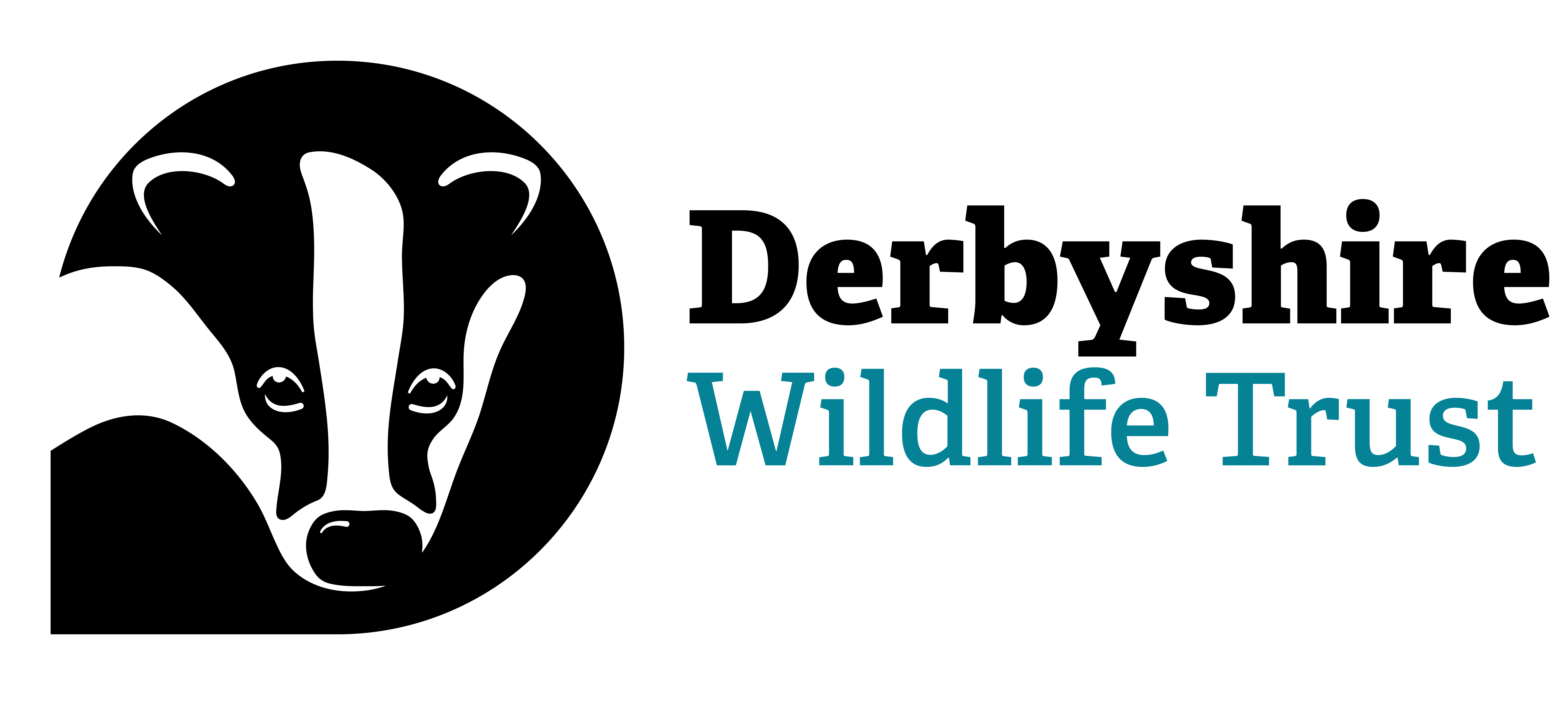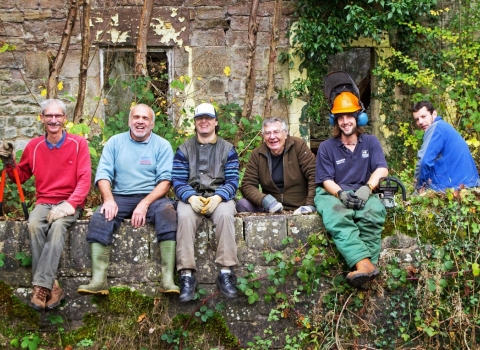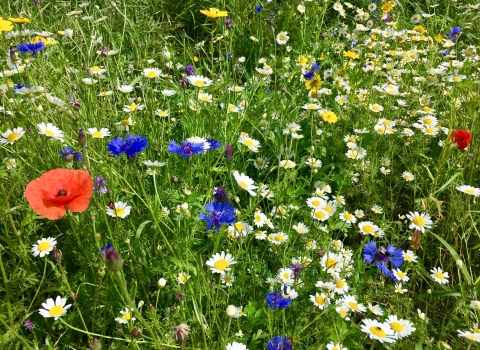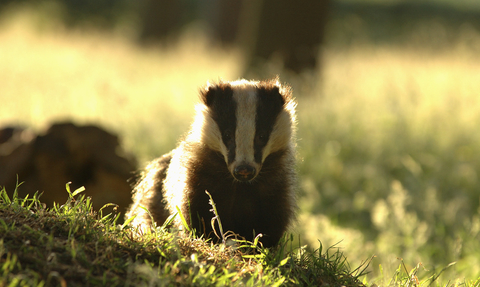
Our MPs responses
We would like to take this opportunity to thank all of the MP’s who have responded to their constituents, in particular Nigel Mill, Toby Perkins and Maggie Throup who stand with the view to oppose the cull.
We have received replies from a number of Derbyshire MPs in response to the thousands of people writing to them, asking them not to support a badger cull in Derbyshire but to support the current national flagship badger vaccination programme which Derbyshire Wildlife Trust has been leading on since 2014.
Most of the MPs who have responded support a badger cull. What is deeply disturbing is that many of these responses argue that the cull, which coming to Derbyshire, is based on science and that the Government is following the science. This is simply not true. There is NO evidence at all that there are high levels of bovine TB in Derbyshire badgers. We have looked at this issue in detail and released a report about it earlier this year.
Click to read more....
Government vets have been using anecdotal evidence, wrapped up as science, to arrive at a figure which implies large numbers of Derbyshire’s badgers have significant levels of bovine TB. Indeed, a recent study of roadkill badgers, by Nottingham University, found less than 4% of badgers (sample size of over 101 badgers) had bovine TB. Now, over 2,000 of Derbyshire’s badgers will be allowed to be shot this autumn and this will continue for the next 4 years. Yet, none of these badgers will be tested for bovine TB! Why is that? Surely, if the Government was basing the cull on science, our MP’s would be keen to find out what levels of bovine TB existed in the shot badgers!
Some of the replies from MP’s argue that the Government will be implementing an exit strategy for the culling of badgers. But this will not happen until the late 2020’s and means another 10 years of intensive badger culling, not only in Derbyshire but across England! The cull announcement (to be made soon) will allow for over 60,000 badgers to be shot this autumn across England. This will be the highest number of badgers allowed to be shot, since the cull began in 2013! By the end of 2020 up to 160,000 badgers will have been shot in England (since 2013), out of an estimated national population of around 350,000. What is deeply disturbing, is how high the number of badgers that have been shot in England by 2030? No MP has raised concerns about the ecological impacts of removing such high numbers of a large mammal from the English countryside.
In the replies of MPs they state that they support badger vaccination and that the Government will in fact be expanding the vaccination programme. But the cull announcement, with new cull zones expected, will include areas in England (like Derbyshire) where badger vaccination has been taking place and which has been paid for by the Government. This will directly undermine badger vaccination, a programme which has been paid for by the taxpayer! The area of the cull zone is not available to us, but from evidence we have gathered it is clear that some of our badger vaccination sites will be close to the cull zone. Almost none of the replies by MPs accepted the fact that it is likely that vaccinated badgers, paid for by the Government, will get shot. In addition by allowing the cull in Derbyshire, it will make it even more difficult to persuade farmers to join the badger vaccination programme. The Government has therefore undermined one of its own policies, to wind down the cull and expand badger vaccination – the exact opposite may soon be happening in Derbyshire!
Pauline Latham - Mid Derbyshire
Thank you for contacting me about controlling the spread of bovine TB. Derbyshire Wildlife Trust has run a very persistent campaign.
The UK’s bovine TB eradication strategy is founded in science. It applies the lessons of previous attempts to control the disease, as well as evidence from other countries around the world. This strategy includes a policy of regular testing and removal of infected cattle from herds, as well as tougher restrictions on cattle movements from herds at risk of infection and measures to encourage greater risk management in areas where the disease is rife.
The badger cull has led to a significant reduction in the disease, but no one wants to continue the cull of this protected species indefinitely. That is why the Government asked Sir Charles Godfray to conduct a review, which concluded in October 2018. Earlier this year, in response to that review, the Government set out its intended next steps, focussed around three key priorities.
The current BCG vaccine will never provide full protection, so I am pleased that funding will be made available to accelerate the research and trial work needed with the aim of having a deployable vaccine in the next five years. Alongside this, an exit strategy from the intensive culling of badgers will begin. As soon as possible, a pilot Government-funded badger vaccination will be introduced in at least one area where the four-year cull cycle has concluded, with simultaneous surveillance of disease. The aim is to only allow future culls where the evidence points to a significant reservoir of Bovine TB in badgers.
Finally, the Government will invest in the deployment of better, more frequent and more diverse cattle testing so that we are able to detect the presence of the disease earlier and remove it from cattle herds faster. I am pleased that world-leading bovine TB cattle vaccination trials are also set to get underway in England and Wales as a result of a major breakthrough by Government scientists. These trials enable work to accelerate towards planned deployment of a cattle vaccine by 2025, in the latest milestone to eradicate this highly damaging animal disease.
Ministers hope that any remaining areas who join the current cull programme in the next few years will then wind down by the mid to late 2020s. Of course, there is no single answer to tackling the scourge of bTB but by deploying a range of policy interventions, we can turn the tide on this terrible disease.
In terms of the Derbyshire specific cull, only 155 badgers have been vaccinated at a cost of £524 per badger. No vaccinated badgers will be killed in this cull because the area where they have been treated is not within the proposed cull area. Vaccinating a badger with TB does not cure the badger, it still has the disease.
In 2019 there were 115 new incidents of TB in herds in Derbyshire. The cost of the cull is £71 per badger.
In the areas where culls have been undertaken they have found that there is much less TB in the area and the badger community is a much healthier one which has to be good for the badgers. TB is a devastating disease for farmers to contend with but the badgers suffer when they have TB.
Finally four farmers within the cull area have committed suicide due to TB and I do not wish to have another one on my conscience.
I know you will be unhappy with my response but I have listened to both sides of the argument and the cull, with the scientific advice, plus the results in other areas has persuaded me to come down in favour of the cull. We are learning all the time and I hope we will continue to take note of the evidence and adjust policies in line with this learning.
Thank you again for taking the time to contact me.
Yours sincerely,
Pauline Latham OBE MP
Member of Parliament for Mid-Derbyshire
Robert Largan - High Peak
Thank you for contacting me about controlling the spread of Bovine TB.
I care very deeply about animal welfare and conserving Derbyshire’s wildlife. That is why I strongly support the 2004 Hunting Act, banning fox hunting with hounds.
On the issue of controlling the spread of Bovine TB, I will follow the guidance of the evidence and the experts. The vaccination of badgers against TB using BCG can enable a level of protection that can help limit the spread of TB to healthy badger populations. I am a keen supporter of this programme and I intend to personally take part in a local vaccination effort in the near future. I welcome the Government’s efforts to increase the take-up of the ‘Badger Edge Vaccination Scheme’ (BEVS) and steps to ensure that badger vaccination schemes more generally make a real difference in tackling Bovine TB.
The Government is also speeding up work to improve the cattle testing regime and deploy the cattle vaccine as part of a multi-pronged approach to eradicate the disease by 2038.
Unfortunately, the number of new incidents of TB is not falling in Derbyshire. Both the number of herds under restriction and the number of cattle being slaughtered are rising at an alarming rate. This has a devastating impact on cattle and on a huge number of local farmers.
The fact remains, you cannot vaccinate an infected badger. As a result, following a lengthy consultation and careful assessment of the evidence, a license will be awarded to begin culling infected badger populations in parts of Derbyshire from 7th September.
It is worth noting that the proposed cull area has very little overlap with the areas where badgers have been vaccinated, just 2km². However, I appreciate that this is a deeply emotive issue and I will continue to study the evidence carefully. I sincerely hope that scientific advances will, in the near future, make such culls unnecessary.
Should you have further enquiries on any other matter, please do not hesitate to contact me.
Yours sincerely,
Robert Largan MP
Member of Parliament for High Peak
Sarah Dines - Derbyshire Dales
Thank you for writing to me regarding badger culling licenses.
Firstly, it is not government policy to comment on leaked documents. No disclosure of cull licenses has taken place, and no licenses will be granted this year until an update on the government's bovine TB strategy is published, which is expected in the autumn.
Bovine TB is one of the most difficult and intractable animal health challenges that England faces today. More than 30,000 cattle are slaughtered each year due to infection from bTB. There is no single answer to tackling the scourge of bTB but by taking a combined approach, we can achieve our long-term goal of eradicating it by 2038. This will bring significant security to the farmers in the Dales, many of whom, as you will know, have been affected by this disease.
Earlier this year, the government published their response to the Godfray Review which sets out the next phase of our strategy to combat bTB. This includes field trials of a cattle vaccine, plans to vaccinate more badgers against the disease, and improved testing to intercept bTB earlier. As wider preventative measures are introduced, the response to the Godfray review sets out an intention to begin to phase out intensive badger culling.
In July, the government announced that world-leading bovine tuberculosis cattle vaccination trials are set to get underway in England and Wales as a result of a major breakthrough by government scientists. These trials enable work to accelerate towards planned deployment of a cattle vaccine by 2025, in the latest milestone to eradicate this highly damaging animal disease. Furthermore, I've also included lines below from the Secretary of State's Dear Colleague letter, following our response to the Godfray Review:
Our bTB eradication strategy, published in 2014, is founded in science. It applies the lessons of our previous attempts to control the disease, as well as evidence from other countries around the world. It also takes into account trial work conducted in the UK during the 1970s and, more recently, during the Randomised Badger Culling Trial. The cornerstone of our strategy is a policy of regular testing and removal of infected cattle from herds. We have incrementally introduced tougher restrictions on cattle movements from herds at risk of infection and more sensitive tests. We have introduced measures to encourage greater risk management and more information for cattle keepers, deployed wildlife controls in areas where the disease is rife and new biosecurity measures to try to break the cycle of infection between cattle and badgers.
Since the initial badger cull pilot in 2013, a policy of badger control has been rolled out to 57% of the high-risk area in the south-west and west of England and is starting to yield results. The latest epidemiological analysis conducted by Downs and others has shown that the incidence of the disease in the first cull areas of Somerset and Gloucester has fallen substantially, by 37% and 66% respectively.
www.nature.com/articles/s41598-019-49957-6https://www.nature.com/articles/s41598-019-49957-6
Intensive badger culls were only ever envisaged as a phase of the strategy, not a perpetual state of affairs. Five years into the current strategy, it is appropriate to take stock and consider how our strategy might evolve. That is why the government asked Sir Charles to conduct a review, which concluded in October 2018. In our recently published response to that review, we have set out our intended next steps, focussed around three key priorities.
Cattle vaccine development
We will provide funding to accelerate the research and trial work necessary to authorise the BCG vaccine for use in cattle alongside a test that can differentiate between vaccinated cattle and those with the disease. Our aim is to have a deployable cattle vaccine within the next five years. Vaccination will never provide full protection but could significantly reduce the spread of the disease both between cattle and between cattle herds and wildlife. The UK can harness its world-leading science in developing solutions such as vaccination that would also be valuable to other countries.
Badger culling & vaccination
Secondly, we will also begin an exit strategy from intensive badger culling, while ensuring that wildlife control remains an option where the epidemiological evidence supports it (i.e. areas where badgers pose a significant source of TB infection). We intend to pilot government-funded badger vaccination in at least one area where the four-year cull cycle has concluded, with simultaneous surveillance of disease. We envisage that any remaining areas would join the current cull programme in the next few years and that the badger cull phase of the strategy would then wind down by the mid to late 2020s.
We will continue to support badger vaccination projects in areas where the prevalence of disease is low. We will also investigate the potential for projects where adjacent vaccination and culling could complement each other in controlling the disease. Changes to our guidance to Natural England on licensing badger control will be subject to consultation.
Cattle measures
Thirdly, we will invest in the deployment of better, more frequent, and more diverse cattle testing, so that we are able to detect the presence of the disease earlier and remove it from cattle herds faster. The frequency of mandatory surveillance testing in two high-risk area counties - Shropshire and Staffordshire - will increase from annual to six-monthly in 2020. We expect this to be extended across the high-risk area from 2021.
There is no single answer to tackling the scourge of bTB but by deploying a range of policy interventions, we can turn the tide on this terrible disease and achieve our long-term objective of eradicating it by 2038.
I am fully supportive of this government’s strategy to combat this terrible disease and look forward to further updates on this matter in the coming months.
Thank you again for writing to me and please feel free to contact me again regarding any further concerns you may have.
Yours sincerely,
Sarah Dines MP
Member of Parliament for Derbyshire Dales
Toby Perkins - Chesterfield
Thank you for contacting me regarding badger culling in Derbyshire. That you are contacting Derbyshire MPs from Canada goes to show how passionate people feel on this issue. I have also been contacted by hundreds of constituents It is important that whilst we recognise the crippling impact of bovine TB and the hardship experienced by farmers whose cattle herds have been devastated by the disease, we recognise that vaccination rather than culling is the way forwards. Whilst I'm glad to hear that Derbyshire has the largest vaccination programme in the country, I'm shocked to hear that culling may be taking place in the county later this year.
A large scale, indiscriminate culling of badgers is not the way we ought to be dealing with the issue of controlling bovine TB, and the government’s decision to kill badgers regardless of whether they are carrying TB or not is unjustifiable.
This is something that I have consistently supported, since my election in 2010 I have consistently voted against badger culling. I have also spoken against the cull, and questioned the Department for Environment, Food & Rural Affairs (DEFRA) regarding this.
In September, I spent an early morning with Derbyshire Wildlife Trust vaccinating badgers. If you're interested in reading about this, you can find my blog post here: http://www.tobyperkins.org.uk/2019/09/mp-toby-perkins-joinsderbyshire-wildlife-trust-for-badger-vaccinations-in-chesterfield/.
Nationally, the country ought to be investing in badger vaccinations to prevent the unnecessary culling of badgers. I believe the Government must immediately cease this mass destruction of wildlife and focus attention and taxpayers’ money on improving testing, vaccinations and controlling the movement of infected cattle, across the country.
Last Summer, I was inundated by constituents expressing their outrage that Derbyshire could become a culling zone, and I was glad that this did not occur. I am shocked to hear that Derbyshire may become a culling zone again, and I have now written to the Government to put forward the case against this. I will be in contact again upon receiving a response. I am also contacting the Derbyshire Wildlife Trust to arrange an urgent meeting.
Thank you for writing to me regarding this very important matter.
Yours sincerely
Toby Perkins MP
Member of Parliament for Chesterfield
Shadow Minister for Apprenticeships and Lifelong Learning
Amanda Solloway - Derby North
Thank you for contacting me about controlling the spread of bovine TB.
The UK’s bovine TB eradication strategy is founded in science. It applies the lessons of previous attempts to control the disease, as well as evidence from other countries around the world. This strategy includes a policy of regular testing and removal of infected cattle from herds, as well as tougher restrictions on cattle movements from herds at risk of infection and measures to encourage greater risk management in areas where the disease is rife.
The badger cull has led to a significant reduction in the disease, but no one wants to continue the cull of this protected species indefinitely. That is why the Government asked Sir Charles Godfray to conduct a review, which concluded in October 2018. Earlier this year, in response to that review, the Government set out its intended next steps, focussed around three key priorities.
The current BCG vaccine will never provide full protection, so I am pleased that funding will be made available to accelerate the research and trial work needed with the aim of having a deployable vaccine in the next five years. Alongside this, an exit strategy from the intensive culling of badgers will begin. As soon as possible, a pilot Government-funded badger vaccination will be introduced in at least one area where the four-year cull cycle has concluded, with simultaneous surveillance of disease. The aim is to only allow future culls where the evidence points to a significant reservoir of Bovine TB in badgers.
Finally, the Government will invest in the deployment of better, more frequent and more diverse cattle testing so that we are able to detect the presence of the disease earlier and remove it from cattle herds faster. I am pleased that world-leading bovine TB cattle vaccination trials are also set to get underway in England and Wales as a result of a major breakthrough by Government scientists. These trials enable work to accelerate towards planned deployment of a cattle vaccine by 2025, in the latest milestone to eradicate this highly damaging animal disease.
Ministers hope that any remaining areas who join the current cull programme in the next few years will then wind down by the mid to late 2020s. Of course, there is no single answer to tackling the scourge of bTB but by deploying a range of policy interventions, we can turn the tide on this terrible disease.
Thank you again for taking the time to contact me.
Yours sincerely,
Amanda
Heather Wheeler - South Derbyshire
Thank you for taking the time to contact me about controlling the spread of Bovine TB.
I appreciate that you have read the various reports from the Derbyshire Wildlife Trust (DWT) and I understand that you and many others find the talk of Badger Culling upsetting.
I understand that you will have researched the problem, nevertheless if you have not looked wider than the information DWT have issued, I have provided some additional information providing a detailed explanation of the huge problem that farmers and those interested in wildlife face with dealing with Bovine TB.
This information is available here: https://www.heatherwheeler.org.uk/news/derbyshire-badgers
The Badger cull elsewhere has led to a significant reduction in the disease, however, no one wants to continue the cull of this protected species indefinitely. That is why the Government asked Sir Charles Godfray to conduct a review, which concluded in October 2018. Earlier this year, in response to that review, the Government set out its intended next steps.
The UK’s Bovine TB eradication strategy is founded in science. It applies the lessons of previous attempts to control the disease, as well as evidence from other countries around the world. This strategy includes a policy of regular testing and removal of infected cattle from herds. Tougher restrictions on cattle movements from herds at risk of infection and measures to encourage greater risk management in areas where the disease is rife.
The current BCG vaccine will never provide full protection, so I am pleased that funding will be made available to accelerate the research and trial work needed with the aim of having a deployable vaccine in the next five years. Alongside this, an exit strategy from the intensive culling of badgers will begin.
All health plans to eradicate infectious disease on farms evolve around identifying infection, removing infected animals, creating preventative measures such as vaccination but also reducing risk from other sources.
As soon as possible, a pilot Government-funded badger vaccination will be introduced in at least one area where the four-year cull cycle has concluded, with simultaneous surveillance of disease. The aim is to only allow future culls where the evidence points to a significant reservoir of Bovine TB in badgers.
Finally, the Government will invest in the deployment of better, more frequent, and more diverse cattle testing so that we are able to detect the presence of the disease earlier and removing it from cattle herds faster. I am pleased that world-leading bovine TB cattle vaccination trials are also set to get underway in England and Wales because of a breakthrough by Government scientists. These trials enable work to accelerate towards planned deployment of a cattle vaccine by 2025, in the latest milestone to eradicate this highly damaging animal disease.
Ministers hope that any remaining areas who join the current cull programme in the next few years will then wind down by the mid to late 2020s.
The ''flagship'' vaccination area in Derbyshire is over 10km from the cull boundary and has only vaccinated 155 badgers out of an estimated population of 5500. So is vaccine in Badgers effective? Yes, but it will not cure animals already infected. The importance and effectiveness of the vaccination should not be undermined however, as scientific experts point out, it should not be the exclusive mechanism used to tackle BTB.
Ultimately, there is no single answer to tackling the scourge of BTB but by deploying a range of policy interventions, we can turn the tide on this terrible disease.
Regrettably four farmers in Derbyshire have taken their own lives due to the pressure of living with an infected herd. Whilst, I understand the affection for Badgers I really do not want to hear of more deaths when we can adopt scientific rules and techniques to end this disease.
Thank you again for taking the time to contact me and please look at the other information.
Yours sincerely
Heather Wheeler
Mrs. Heather Wheeler
Member of Parliament for South Derbyshire
Nigel Mills - Amber Valley
I am of course against any sort of cruelty towards animals, and have seen effective vaccination in action during my visit to the Derbyshire Wildlife Trust.
Given there is no current TB problem in Amber Valley, I cannot see any need for any culling in this area. I will support more funding for vaccination so the programme can be extended, and will oppose badger culling wherever possible.
Thank you for contacting me.
Regards,
Nigel Mills MP
Member of Parliament for Amber Valley
Maggie Throup - Erewash
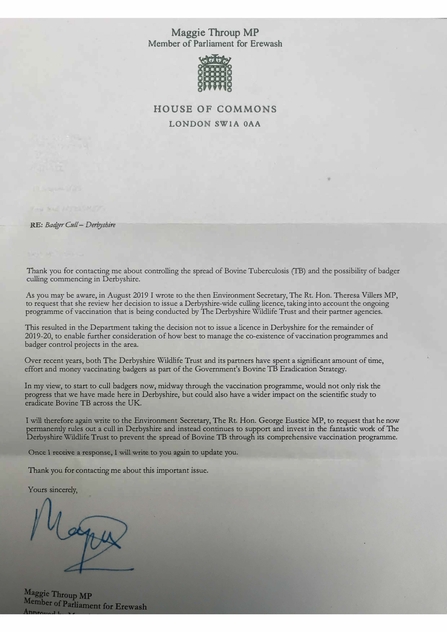
Lee Rowley - North Derbyshire
I hope you are well.
Many thanks for your email and for highlighting the campaign by the Derbyshire Wildlife Trust.
This is a sensitive area and one where I will be guided by experts. To understand what it happening here, we have to go back to the beginning. Reductions in badger populations are being proposed because they are believed to spread a disease, bovine TB, which is currently rampant in certain parts of the United Kingdom. Bovine TB is a horrible disease which is devastating farms and animals. The disease develops slowly, causing animals to cough and then great pain when breathing. Animals will cough up blood and then develop lesions. Eventually, cattle will have to be slaughtered to avoid the disease spreading. In 2017 alone, 33,000 cows were slaughtered and the number of animals who are having to be killed because they have bovine TB has quadrupled in the last decades. The UK is, I’m afraid, in the middle of an epidemic of this disease and we need to try to stop what is happening here.
One of the theories behind the significant increase in bovine TB in recent decades is that farm animals are catching the disease from other animals in the wild. One of the animals believed to transmit TB is badgers, hence the focus on badgers in trying to reduce bovine TB. Over the last thirty years, the number of badgers in the United Kingdom has nearly doubled – a success story in wildlife protection. This is very good news but it also seems to have meant an increased risk in the spread of bovine TB.
Attempts to control bovine TB have been attempted over the last twenty years without success. Given the growing problem of TB, in 2012, the Government decided to step up activity in this area as part of a 20-year attempt to get a grip on bovine TB and stop its spread (Derbyshire is on the periphery of the area affected and if it comes to our part of the world then thousands of cattle will suffer terribly and, eventually, will need to be slaughtered because of the effects of the disease). Part of this activity includes reducing badger populations in some areas to see if it has a long-term impact on the reduction of the disease. Vaccination is also part of the strategy, as is controls on the movement of cattle by farmers.
The evidence for the effectiveness of what is happening at the moment will take a long-time to come through as part of this 20-year plan and so the Government is continuing with its programme whilst that evidence is gathered and analysed. There is not, currently, any population reduction underway in Derbyshire. I realise that the Wildlife Trust have a very strong view on this matter but, as of now, there is no confirmation that Derbyshire will be included. If it is, I would be happy to talk further and discuss.
On a personal level, and all other things being equal, I would not want to see population reduction in badgers (or any other animal) unless it is absolutely necessary. I realise that significant focus is being placed on the badger and people feel very strongly about protecting badgers where possible. I agree that is important. Yet, we also have to consider the other, less high-profile part of this terrible issue – the painful and horrible deaths of tens of thousands of cattle every year. As a Government, we have to be responsible and minimise that as well. Sometimes in the countryside, difficult decisions have to be taken and there are some difficult decisions within this programme to halt the spread of bovine TB. The concern is that vaccination alone may not do that sufficiently and so some population reduction activities may be necessary to get a grip on this disease and stop the impacts on other animals.
I hope the above is helpful in explaining the reasons for the Government population. As I say, there is not currently a programme for population reduction in Derbyshire. If one comes forward, I would be happy to discuss at the time.
Many thanks,
Lee
